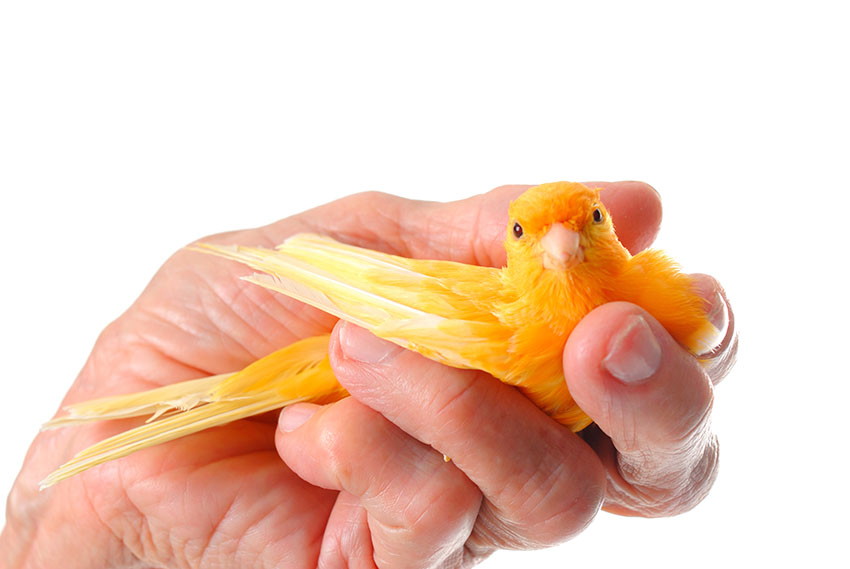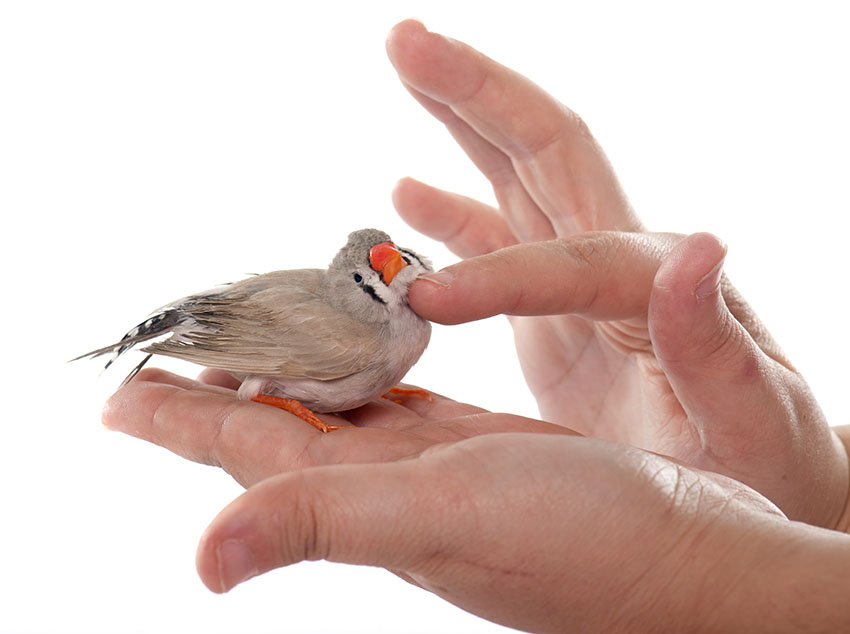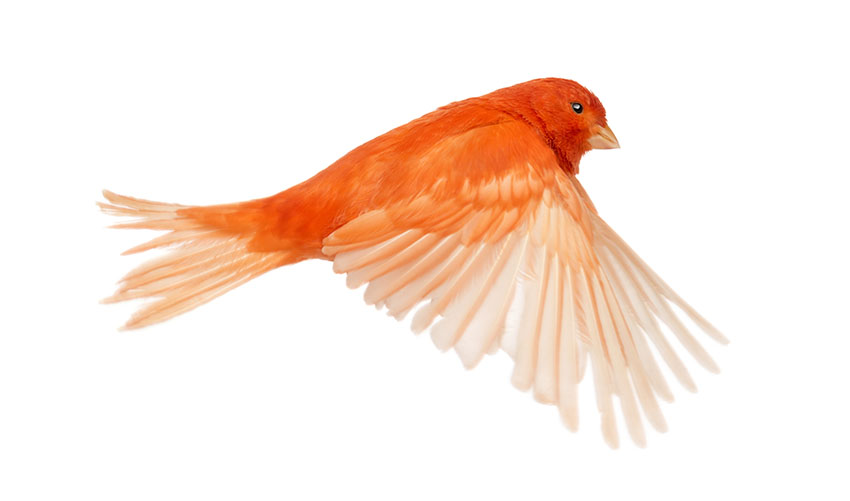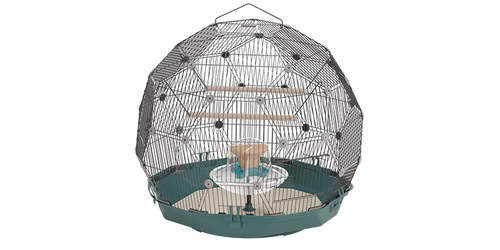Birds soon get used to human hands fiddling around in their personal space - an important detail, as you will want to spruce up the cage regularly without causing mass panic amongst its occupants. Start by holding your hand near the cage while you talk or whistle soothingly to your birds. Once they seem unflustered by its presence (this will take a few days, and you can’t rush it), gently stroke your hand up and down the bars. This will get the finches used to a hand that both moves and makes a noise.
The last phase is to introduce the hand into the cage. Once you can do this without causing panic, you’ve cracked it. The birds will still want to retreat to the far side of the cage while you clean up, but that’s fine.
If you only have a single Canary, an even better arrangement is to allow your pet to stretch his wings while you wipe down the interior of the cage. Canaries will happily fly to and from their cages, and can also be trained to hop onto your finger, which is handy if you need to speed up the back-in-the-cage bit. See the Canary Taming Tips section for more details.

A tame Canary can be handled without causing distress
Handling Canaries and Finches
There are other times when you will need to hold your pet finch - if there are any health problems, for example, or if you need to relocate it. Holding it in such a way that enables you to examine it is important if a close visual check-up is needed; and even if you’re merely moving the finch from A to B it’s good practice to learn the correct small-bird hold, to prevent the captured bird from becoming stressed.
Pet finches are unlikely to become tame enough to perch on your finger. The exceptions are birds that have been hand-reared (such as the Zebra finch in the photograph below), and Canaries. The latter, if kept as singletons, can be hand-tamed, which allows you to remove them from, and return them to, their cage while you clean it out. A Canary is unable to learn tricks, and is unlikely to fly to your finger from afar (unlike, say, a well-trained budgie or cockatiel). The bird will only hop onto your finger if you brush its belly as a prompt; but it is still a very handy ability, and worth spending the time to establish.
To pick up a pet finch, place your palm across its back and wings, with your middle and index fingers gently around its neck to prevent struggling and pecking. Your lower two fingers and thumb can cradle its body for further support. Don’t grip the bird too hard, but be firm enough to avoid it moving around, otherwise it will panic. Make soothing noises (if the bird is tamed you will have established your own signature noise, by which he identifies you as a friend). If the bird is a tame Canary, you can adopt a looser hold.

Only a tame bird will perch on your hand - others require a firmer grip
Netting a Bird
Holding a finch implies that you have caught it! Unless your bird is finger-tamed, you will not be able to entice the finch onto your hand very easily, and will need a net in order to catch it. In a smaller cage you may be able to catch the bird using just your hand - if the bird is used to your presence, you can insert the hand, leave it for several seconds, and then make your move. In a larger setup you’ve got no chance without a net. Netting a bird is never going to make it happy, so learning how to do it quickly and efficiently is essential.
Nets should be at least 25cm wide and 50cm deep, with a handle that can reach as high as your aviary space. You can buy such nets from bird suppliers, or make one yourself using a plastic hoop or padded wire, and some muslin (cheesecloth) or other soft, light material.
Net the birds in flight, to minimise the chance of injuring them. If several have to be netted, make several short raids rather than an extended hunt, which will reduce the unnetted finches to nervous wrecks.

If your pet is not hand-trained, you will need to net it in order to examine it
If you’re not confident in performing a netting, ask a breeder or other bird-handler to show you how it’s done, to boost both your competence and confidence.



Comments
Jason, 24 December 2021
I just got my society finch today and I like that they respond to me with chirps but they seem like they are scared when I put my hand in the cage so I’m asking should I catch them when they’re in mid air?
Jane, 22 April 2021
I've been hand rearing zebra finches for about two weeks now as there parents didn't care for them.they are doing well but just wanted to know can I put them back with the other finches when there old enough
Norma, 17 February 2020
have had a one year old zebra pair for only 2 weeks, they seem to enjoy me sitting near them and we communicate. if I am too engrossed on laptop theywill pelt me with seeds until I trill or speak to them. when I place my hand in cadge they do not seem too stressed and deliberatly fly around my open hand and gently touch as they pass my motioonless hand. . They came from a community of 20 birds, and were abandoned in an appartment when the person moved. my cadge is 24 in square and will look for a biggeer one if they decide to breed.. Am thinkiing 2 pair would be nice.
Chrysa, 26 June 2019
I trained my adult young finch within 4 day of bringing him home. It is possible